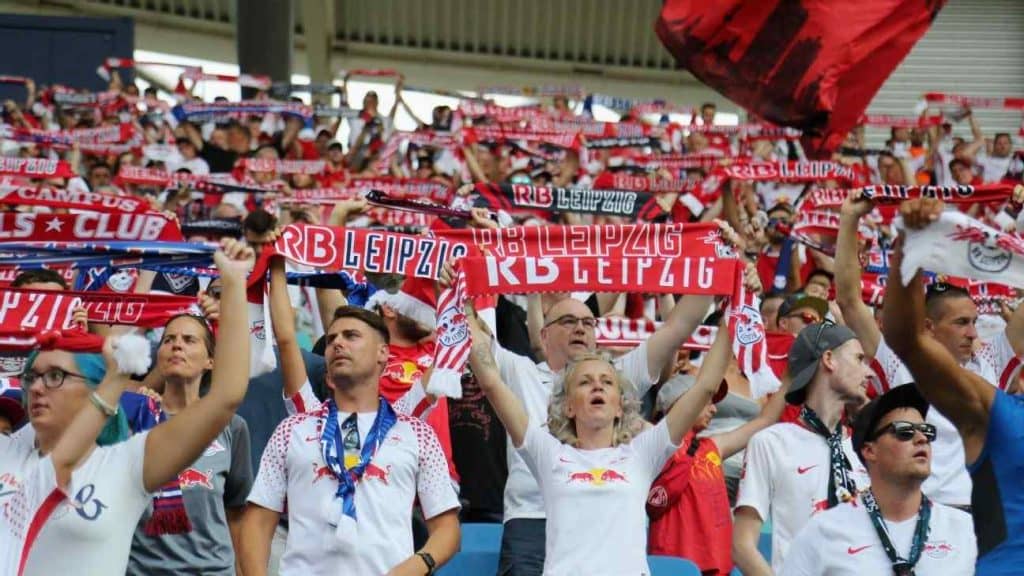
Have you ever heard of the term “plastic fans” when it comes to soccer? If not, don’t worry! You’re not alone. Plastic fans are a relatively new phenomenon in the world of soccer and have become an unfortunate reality for many teams and players. In this article, we’ll explain what fake soccer fans are, why they exist, and how clubs are trying to combat them. So if you want to know more about this topic, keep reading!
Plastic soccer fans claim to be loyal supporters of a team but don’t actually attend matches or participate in any other genuine fan activities. These individuals often buy merchandise and post online as if they were real fans, but their true motivation is usually financial gain or personal attention. Unfortunately, this phenomenon has become increasingly common as more teams have emerged worldwide.
What Makes You a Plastic Fan?

Being a plastic fan in soccer, or any sport for that matter refers to someone who claims to support a team or athlete but has no genuine connection or allegiance to them. These fans are often referred to as “fairweather fans” because they only show their support when the team is doing well, but quickly jump ship or turn on the team when they are struggling.
Plastic fans are usually more interested in being seen as a fan of a successful team rather than actually supporting and understanding the sport or the team’s culture. They may also be drawn to a team simply because they are popular or trendy rather than really understanding the team’s history or values.
One of the main characteristics of a plastic fan is their lack of knowledge about the team or sport. They may not know the players’ names, positions, or game rules. They may also lack the passion and dedication that true fans have, and may not attend games or engage in team-related activities as frequently.
Another trait of a plastic fan is their fickle nature. They may switch their allegiance to another team if their current team is not performing well or if a more popular team becomes available. This lack of loyalty and commitment is a clear sign that they are not true fans but are just using the team to fit in or be part of a social group.
In contrast, true fans of a team or athlete have a deep-seated connection to the team and its values. They follow the team through thick and thin and are knowledgeable about the sport and the team’s history. They may attend games regularly or engage in team-related activities such as joining a fan club or watching games with other fans.
Ultimately, what sets true fans apart from plastic fans is their genuine love and support for the team. They are not just followers of a trend or bandwagon but are dedicated and passionate supporters of the team and its players.
The Impact of Plastic Fans on the Game of Soccer

The impact of plastic fans on the game of soccer is a topic that has garnered a lot of attention in recent years. For those unfamiliar with the term, plastic fans refer to individuals who claim to support a particular soccer team, but have little to no real connection to the team or its culture.
These fans often purchase team merchandise and attend matches, but their support is superficial, and they have little understanding of the history or traditions of the team they claim to support.
Plastic fans have become increasingly common in recent years, particularly with the globalization of soccer and the rise of social media. In addition, many people are drawn to soccer due to its widespread popularity and the opportunity to be part of a larger community.
However, some individuals see supporting a soccer team as a way to fit in or appear cool rather than out of genuine love for the sport or team.
The impact of plastic fans on soccer can be both positive and negative.
On the one hand, the influx of new fans can bring much-needed attention and financial support to teams and leagues. However, on the other hand, the lack of genuine passion and understanding of the sport can also lead to a shallow and superficial fan culture.
Plastic fans may not fully appreciate the nuances of the game or the traditions of their chosen team and may not provide the same level of support as more dedicated fans.
Furthermore, the presence of plastic fans can dilute the authenticity and traditions of soccer culture. True fans of a team often have a deep emotional connection to their team and its history, and the influx of plastic fans can diminish the sense of community and belonging that is so integral to the soccer experience.
Who Has The Most Plastic Fans?

Plastic fans, also known as fair-weather or casual fans, are individuals who only support a soccer club when they are flourishing or fashionable. They tend to jump on the bandwagon and abandon their team when they struggle or go out of style.
These types of fans are often criticized for lacking loyalty and genuine passion for their club. So, which clubs do have the most plastic fans? It’s difficult to pinpoint precisely, as it can vary from region to region and from time to time. However, there are a few clubs that tend to attract a higher number of plastic fans.
One club that is often accused of having a large plastic fan base is Manchester United. The Red Devils are a global brand with a massive following, and their success on the pitch has attracted many casual fans.
While there are undoubtedly die-hard Manchester United supporters, it’s hard to deny that the club has a significant number of plastic fans who only support the team when they are winning.
Another club that is often criticized for having a plastic fan base is Paris Saint-Germain. The French giants have experienced a surge in popularity in recent years due to their high-profile signings and success on the pitch. However, many fans of other clubs view Paris Saint-Germain as a trendy club focusing more on style than substance.
As a result, they are often accused of having a large number of plastic fans who are more interested in the club’s image than their on-field performance.
It’s important to note that every club has plastic fans, and it’s unfair to single out certain clubs as having a larger proportion of them. However, it’s undeniable that certain clubs, such as Manchester United and Paris Saint-Germain, tend to attract more casual fans due to their success and popularity.
Therefore, it’s up to each individual club to cultivate a loyal and passionate fan base, regardless of their on-field performance.



